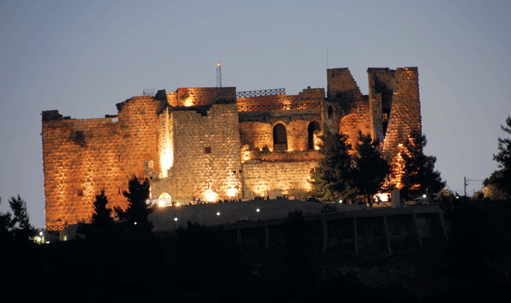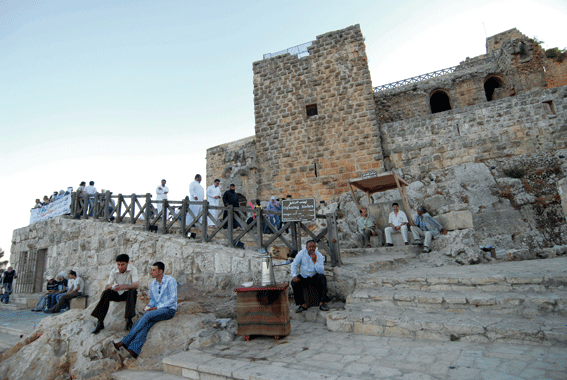
Travel
In Jordan's Meadows
Ajloun Glows with Breath-taking Greenery

About 900 meters above sea level, Ajloun lies majestically on a mountain 65 kilometers north of Amman, Jordan’s capital. Its spectacular landscape attracts many tourists who come to enjoy this historic and archaeological site amid lush forests.
By: Naseem Eneizat, Amman
Translated by: Reem Al-Fa’ouri
Escaping the summer heat, many people visit Ajloun, seeking the tranquility of the place under the oak trees that surround the city. At the Jersah junction, where the highly impressive highway leads to Irbid, there lies Ajloun, the city that buzzes with the historical reminiscences of both the Greek and Roman civilizations.
The northern road from Jerash is exquisitely green with mountains on either side with the scent of roses that fill the heart with pure joy.
The old “Ajloun Great Mosque” with its high minaret welcomes all visitors, representing the city’s ancient landmarks, combining heritage with modernity as old mud houses were renovated to give a plush look.
The Ishtafeena region to the south of the city is a favorite tourist destination, receiving many local and Arab visitors who come to enjoy the splendid scenery and its features of wild oak trees and white oak forests.
The looming growth of trees on either sides of the road helps alleviate the heat of the sun, enabling people to park their cars and enjoy a couple-of-hours barbecuing, blowing on their hubbly-bubbly and generally having a good time. 
Ishtefeena embraces the Ajloun Nature Reserve run by the Royal Society for the Conservation of Nature, whose strategy is to preserve the eco-environment of rare plant species and wild animals in this lush terrain while contributing to the development of the local community.
In Wadi Rajeb, five kilometers from Ajloun, visitors relish the sound of water cascading down from mountain tops.
In winter, Ajloun’s mountains and valleys are all capped with snow; The Ajloun Castle, a great surviving fortress lies, crowning a mountain all by itself. It was built in 1184 under the orders of Ezz Din bin Osama bin Munqeth, one of Saladin Al-Ayyoubi’s army leaders, to observe the movements of the Crusaders around the Castle of Belvoir (Kawkab El-Hawa) as well as exploit the iron mines strategically spread on the mountains of Ajloun and to control the road between Syria and the south of Jordan.
The castle’s structure takes a rectangular shape with four towers. Every tower is two stories high. Two more towers were added to the right of the castle’s entrance overlooking the Dead Sea, Palestine and Jerusalem. One can have a most wonderful view of the mountains from the eastern towers of the castle surrounded by forests of white oak. The robust structure of the castle is built with large stones maintaining their original features over the years.
The castle has warehouses, a well, and stables. Visitors can enter it through a wooden hanging bridge to an old-rock-paved corridor and a high array of stairs leading to the halls and towers. Archeological artifacts are displayed in abundance. The Ministry of Tourism drew up a development plan to preserve the castle and its historical treasures and has lit the place so that visitors can see it from afar. A series of restaurants as well as hotels at competitive prices have been established in the area to lure tourists from all over the world.